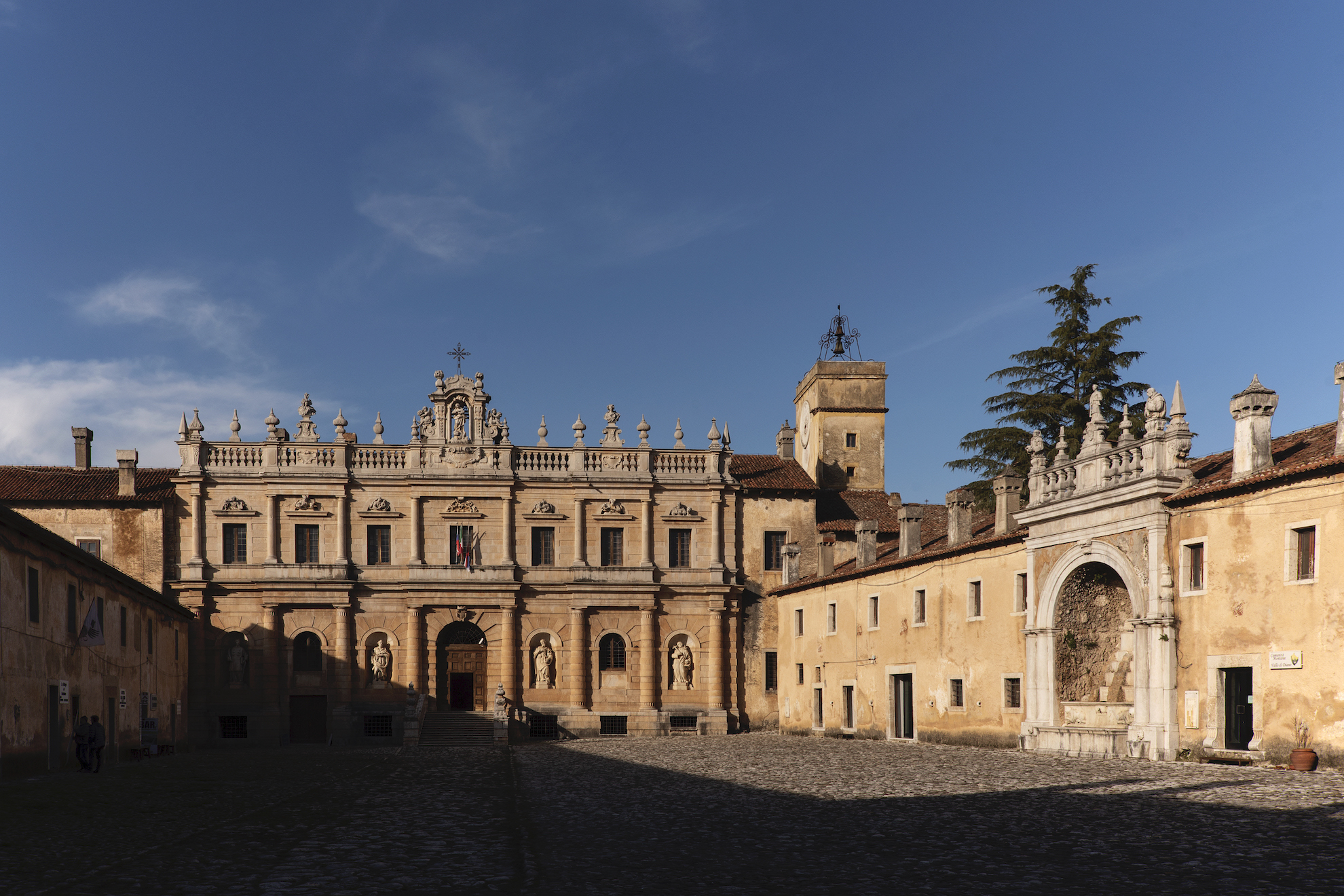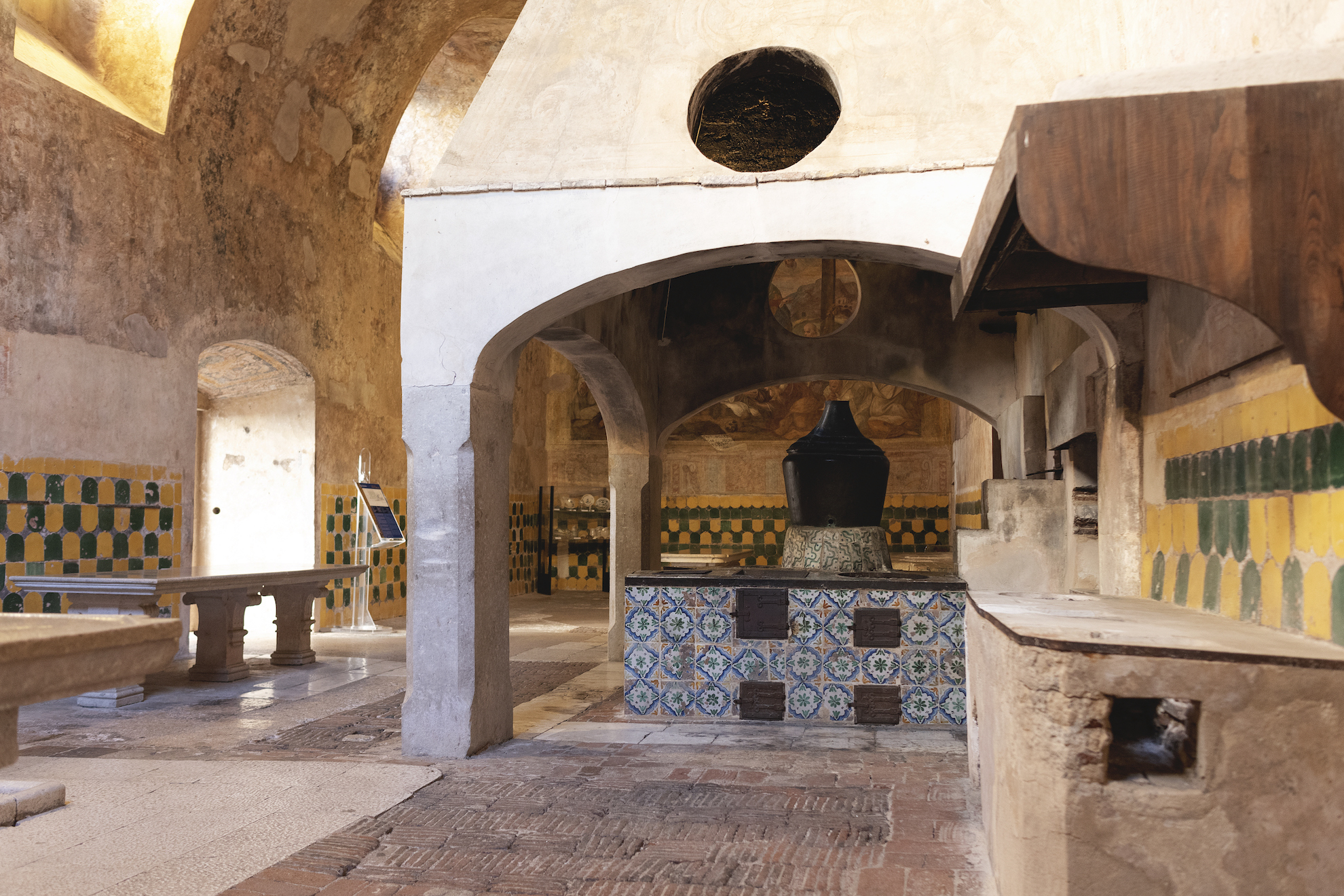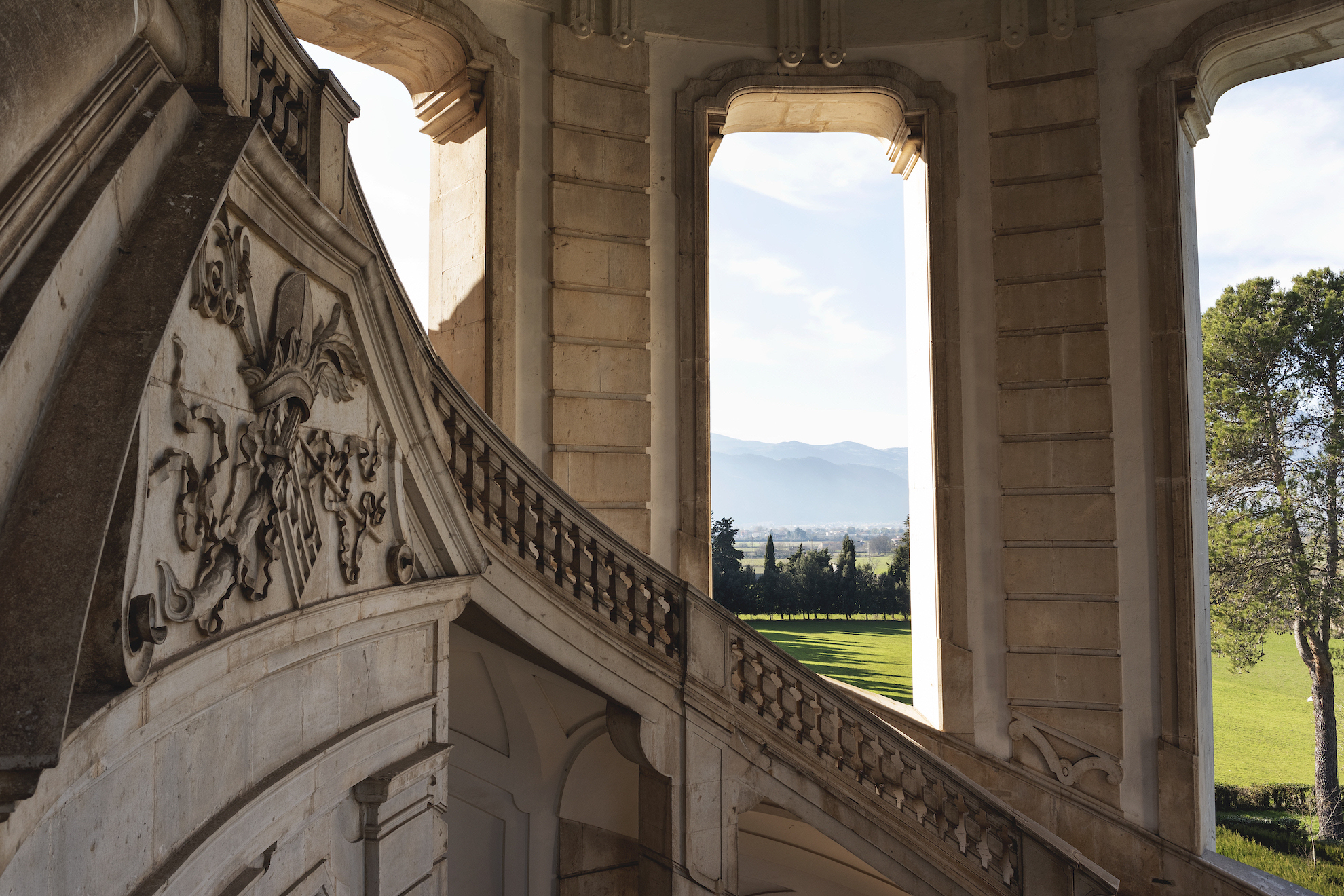Silence. A deep silence inside and around. From the immense cloister of the Charterhouse, looking upwards, you see so many houses, one above the other, so different from the harmonious sequence of cells all the same.
The facade of the Charterhouse | Ph. Anna Monaco - Trentaremi

«I live in the desert with brothers», said St. Bruno, referring to the Carthusian order he founded in 1084; today many Charterhouses are surrounded by houses and by the "worldly" life, the very one that the monks refused, in order to live in solitude. This is also the case of the Certosa di San Lorenzo in Padula, the oldest of the three in Campania and among the most ancient in Italy, built in Vallo di Diano starting from 1306 by order of Count Tommaso Sanseverino.
The Carthusian monks are no longer there - since 1882 the Charterhouse has become a national monument - but their presence survives in the spaces, in the decorations and in the silence that after centuries still characterizes this place.
The kitchen | Ph. Anna Monaco - Trentaremi

Asceticism and cenobitism or sacrifice of the worldly life, loneliness but also moments of sharing, foreseen by the rule, so as not to lose sight of spiritual perfection, these were the directives for the monks with a white dress. Prayer in the cell, but also together in the church, the meal eaten in silence in the refectory on special occasions, the walk in pairs in the cloister or the “break” granted once a month.
The cell, the church, the refectory, the cloisters are the places where the Carthusian monks carried out this demanding choice of life, under the supervision of the prior, joined by the lay brothers, laic people involved in the care of the Charterhouse. A perfect organizational machine, capable of making this microcosm work even in the most earthly aspects of everyday life.
The elliptical Staircase | Ph. Anna Monaco - Trentaremi

The vegetable garden to grow medicinal plants and vegetables in every cell, an extensive land, surrounding and isolating the Charterhouse, for fruit trees and cereals, stables, and a constant and meticulous work by the lay brothers, in order to relieve the monks from any task. And there were many of them, just look at the kitchen. An imposing hood, colored tiles on the walls and tales of lunches prepared for illustrious guests, such as the legendary omelette of a thousand eggs.
Because important people like kings and prelates were allowed there and the guest quarters were reserved for them, which is also the first environment that can be seen when entering. The world entered the Charterhouse only for a few moments, while the only “escape” granted to the monks was the desertum, the large park that can be admired from above through the elliptical Staircase, one of Padula's architectural jewels.
A ramp of the Staircase | Ph. Anna Monaco - Trentaremi

Located at the end of the large cloister, it is a celebration of the majestic eighteenth-century staircases: a vortex of local stone steps, illuminated by huge windows that open onto the green of the park. It was designed by Gaetano Barba, a pupil of Luigi Vanvitelli, and was used to access the upper floor of the cloister where the Carthusians strolled. It is a marvelous joint of sinuous curves and steps in a small space, closed as it is in a tower, to which nature is the background. Hidden and surprising just like the Charterhouse.

